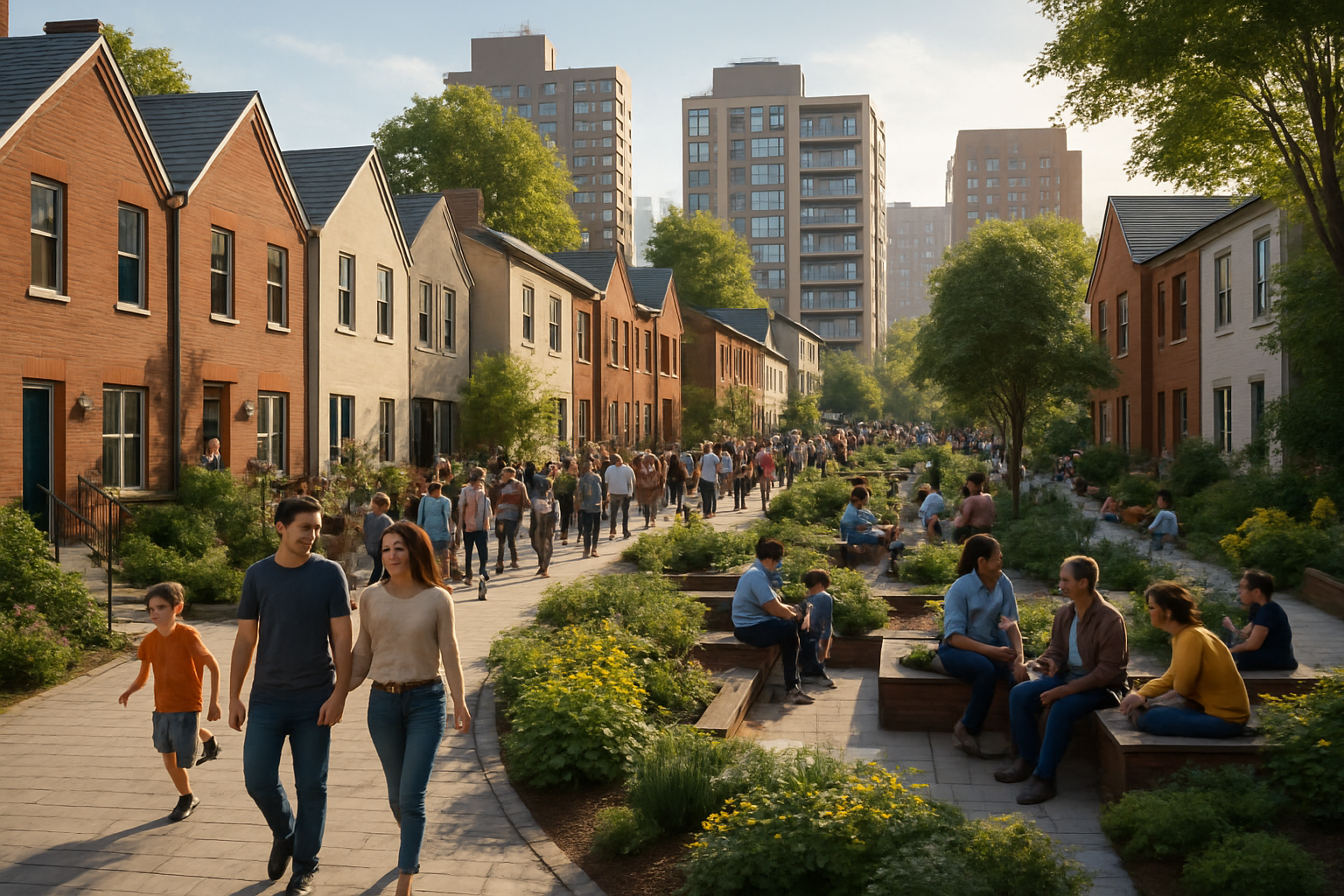The Emergence of Micro-Neighborhoods in Urban America
Reshaping city landscapes, micro-neighborhoods are redefining community living. These hyper-local pockets within larger urban areas are fostering tight-knit social bonds and unique cultural identities. From shared gardens to collaborative workspaces, these miniature communities are revolutionizing how urbanites connect and thrive. Read below to explore this fascinating trend and its impact on modern city life.

The Sociology of Proximity
At the heart of the micro-neighborhood phenomenon lies a fundamental human need for connection and belonging. Sociologists have long studied the impact of physical proximity on social relationships, and micro-neighborhoods provide a perfect laboratory for observing these dynamics in action. By creating opportunities for frequent, spontaneous interactions among neighbors, these compact communities foster a sense of familiarity and trust that can be challenging to achieve in larger urban settings. This increased social cohesion has been linked to numerous benefits, including improved mental health, reduced crime rates, and enhanced overall quality of life.
Design and Infrastructure
The physical design of micro-neighborhoods plays a crucial role in their success. Urban planners and architects are increasingly incorporating elements that encourage community interaction and shared experiences. This might include centrally located communal spaces, such as pocket parks or community centers, as well as pedestrian-friendly streetscapes that prioritize walking and cycling over car traffic. Some micro-neighborhoods are experimenting with innovative housing models, such as co-living arrangements or multigenerational homes, further blurring the lines between private and communal space.
Economic Ecosystems
Micro-neighborhoods are not just about social connections; they’re also fostering unique economic ecosystems. Many of these communities are home to a diverse array of small businesses, artisanal workshops, and local services that cater specifically to the needs and preferences of residents. This hyper-local economy not only provides convenient amenities but also creates a sense of pride and investment in the community. Some micro-neighborhoods have even developed their own local currencies or time-banking systems, further strengthening economic ties among residents.
Technological Enablers
While the core concept of micro-neighborhoods is rooted in face-to-face interactions, technology plays a significant role in facilitating community organization and communication. Social media platforms and neighborhood-specific apps allow residents to easily share information, coordinate events, and collaborate on projects. Smart city technologies, such as community-wide Wi-Fi networks or shared electric vehicle charging stations, are also being integrated into some micro-neighborhoods, enhancing connectivity and sustainability.
Challenges and Criticisms
Despite their many potential benefits, micro-neighborhoods are not without their challenges and critics. One major concern is the risk of exclusivity and gentrification. As these communities become more desirable, property values may rise, potentially pushing out long-time residents who can no longer afford to live there. There’s also the question of how micro-neighborhoods fit into broader urban planning strategies and whether they might contribute to further fragmentation of city landscapes.
The Future of Urban Living
As cities continue to grow and evolve, the micro-neighborhood model offers an intriguing vision for the future of urban living. By combining the intimacy of small-town life with the diversity and opportunities of big cities, these communities are creating a new paradigm for urban social structures. While it remains to be seen how this trend will develop over time, it’s clear that micro-neighborhoods are already having a significant impact on how people experience and interact with their urban environments.




